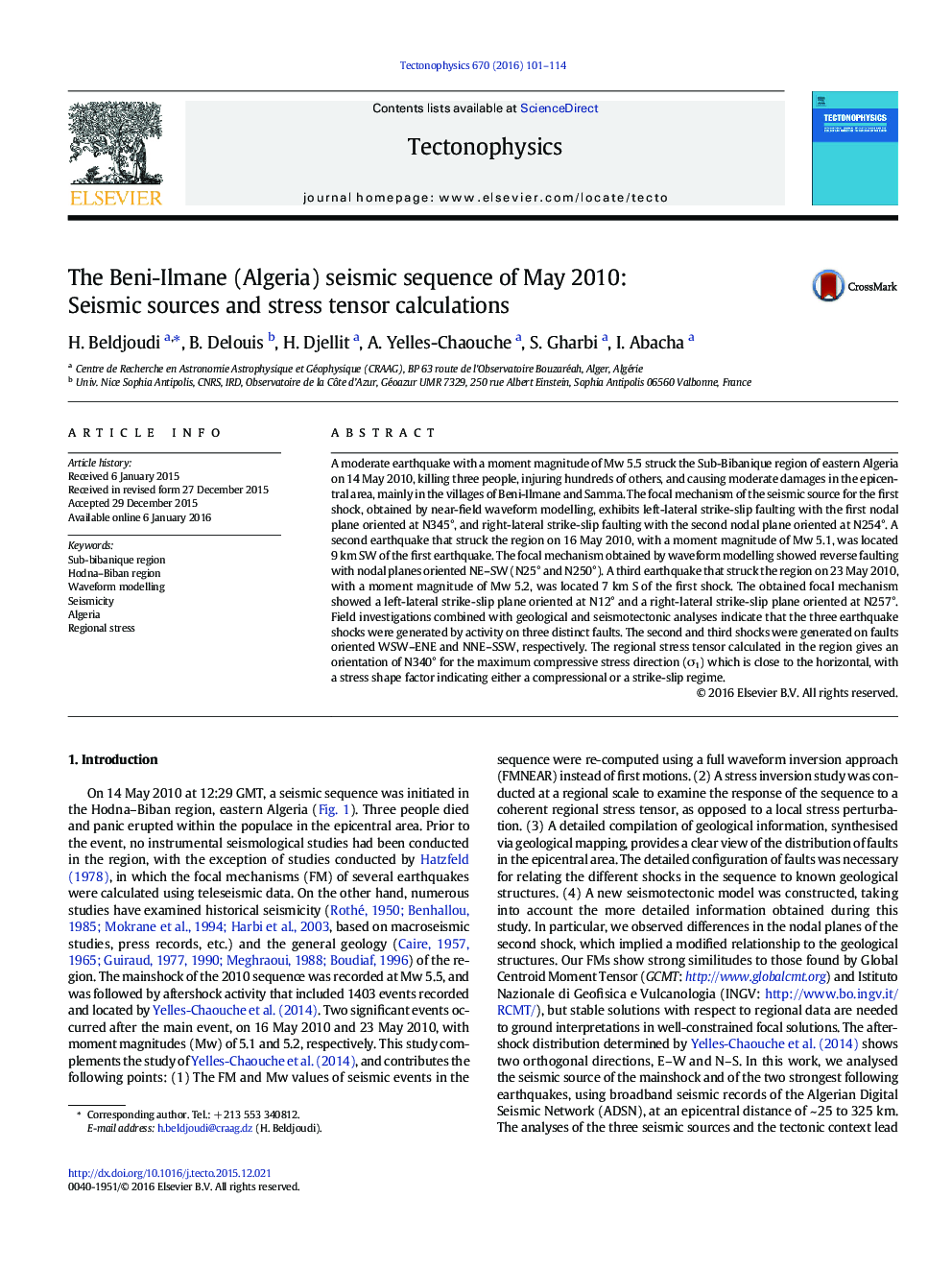| کد مقاله | کد نشریه | سال انتشار | مقاله انگلیسی | نسخه تمام متن |
|---|---|---|---|---|
| 4691375 | 1636726 | 2016 | 14 صفحه PDF | دانلود رایگان |
• We calculate focal mechanisms of seismic sequence using a full waveform inversion approach.
• We compute regional stress tensor in the Hodna–Biban region (eastern of Algeria).
• We give a detailed compilation of geological information, and synthesised a geological map of the region.
• We construct and suggest a new seismotectonic model of the epicentral area.
A moderate earthquake with a moment magnitude of Mw 5.5 struck the Sub-Bibanique region of eastern Algeria on 14 May 2010, killing three people, injuring hundreds of others, and causing moderate damages in the epicentral area, mainly in the villages of Beni-Ilmane and Samma. The focal mechanism of the seismic source for the first shock, obtained by near-field waveform modelling, exhibits left-lateral strike-slip faulting with the first nodal plane oriented at N345°, and right-lateral strike-slip faulting with the second nodal plane oriented at N254°. A second earthquake that struck the region on 16 May 2010, with a moment magnitude of Mw 5.1, was located 9 km SW of the first earthquake. The focal mechanism obtained by waveform modelling showed reverse faulting with nodal planes oriented NE–SW (N25° and N250°). A third earthquake that struck the region on 23 May 2010, with a moment magnitude of Mw 5.2, was located 7 km S of the first shock. The obtained focal mechanism showed a left-lateral strike-slip plane oriented at N12° and a right-lateral strike-slip plane oriented at N257°. Field investigations combined with geological and seismotectonic analyses indicate that the three earthquake shocks were generated by activity on three distinct faults. The second and third shocks were generated on faults oriented WSW–ENE and NNE–SSW, respectively. The regional stress tensor calculated in the region gives an orientation of N340° for the maximum compressive stress direction (σ1) which is close to the horizontal, with a stress shape factor indicating either a compressional or a strike-slip regime.
Journal: Tectonophysics - Volume 670, 22 February 2016, Pages 101–114
